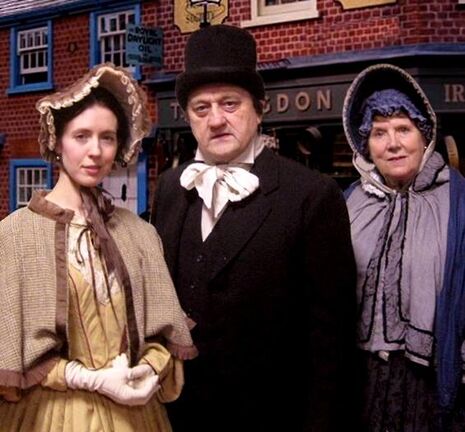Theatre: The Old Curiosity Shop
Rebecca Rosenberg enjoys this well-adapted Dickensian classic, despite some flaws

This is the third Dickens adaptation from Bawds, a Cambridge-based amateur dramatic production company. The novel The Old Curiosity Shop is highly episodic in nature and filled to the brim with characters, some of whom are excluded from this two-hour piece. However, each episode, and indeed the narrative of the play, was performed in surprisingly consistent form.
Four sub-plots continued alongside each other throughout the play but the theme, the main narrative, remained ever-present so there was no awkward juxtaposition. However sometimes the scenes seemed too descriptive and did not seem to add much to the plot. Each scene moved smoothly onto to the next; even the physical scene changes were seamless. A simple table and a few chairs at the centre of the stage served as the main props during the play, and were used effectively for all the scenes, from a lawyer’s office to a moving carriage.
In addition to the dialogue in the novel, some of the first person narratives were included through Woody Allen-esque turns towards the audience mid-conversation. The scenes were further enriched by some of the original descriptions of characters and of locations, provided by the various narrators. To advance the plot, these narrators were also used effectively to explain some of the action. However, the most innovative use of the narrators was as Mrs. Jarley’s waxworks. As she described her works, the narrators jumped into position, adding a comical touch to the play.
Anyone who has read the novel knows that the denouement is particularly tragic. However, the Bawds kept this moment in the realm of narrative and brought the play to a close with a musical number, bringing back the aforementioned Mrs. Jarley and her waxworks. It is an absurd, albeit upbeat ending that veers towards Oscar Wilde’s famous opinion of the novel that it reduces to tears of laughter. The choice to depict the ending in this way no doubt would have disappointed some fans of the tragedy, but this adaptation contains some sincerity despite the new, almost pantomimic ending adding some ridiculous comedy to the play.
Elements of pantomime subtly pervade the play, from the super-villain Mr. Quilp, acted superbly with sinister abandon, to the dramatic revelation of the Marchioness in the Brass’ house. However, some of the acting becomes too forced. Mr. Swiveller has a few quips that receive laughs, but the affable, naïve character is mostly acted with excessive ridiculousness. Similarly Nell becomes gratingly sentimental throughout the play due to the increasingly squeaky voice and pathetically premonitory coughing.
The play is a good adaptation of the text but it cannot seem to decide whether it is a serious play or a more comic, pantomimic effort. The body of the play jars with the absurd, musical ending, which creates a sense of confusion. The production is still worth a watch, but take the ending with a pinch of salt.
 News / Downing investigates ‘mysterious’ underground burial vault 29 December 2025
News / Downing investigates ‘mysterious’ underground burial vault 29 December 2025 News / Unions protest handling of redundancies at Epidemiology Unit30 December 2025
News / Unions protest handling of redundancies at Epidemiology Unit30 December 2025 Lifestyle / Ask Auntie Alice29 December 2025
Lifestyle / Ask Auntie Alice29 December 2025 Features / ‘Treated like we’re incompetent’: ents officers on college micromanagement30 December 2025
Features / ‘Treated like we’re incompetent’: ents officers on college micromanagement30 December 2025 Science / Astronomical events to look out for over the break29 December 2025
Science / Astronomical events to look out for over the break29 December 2025









